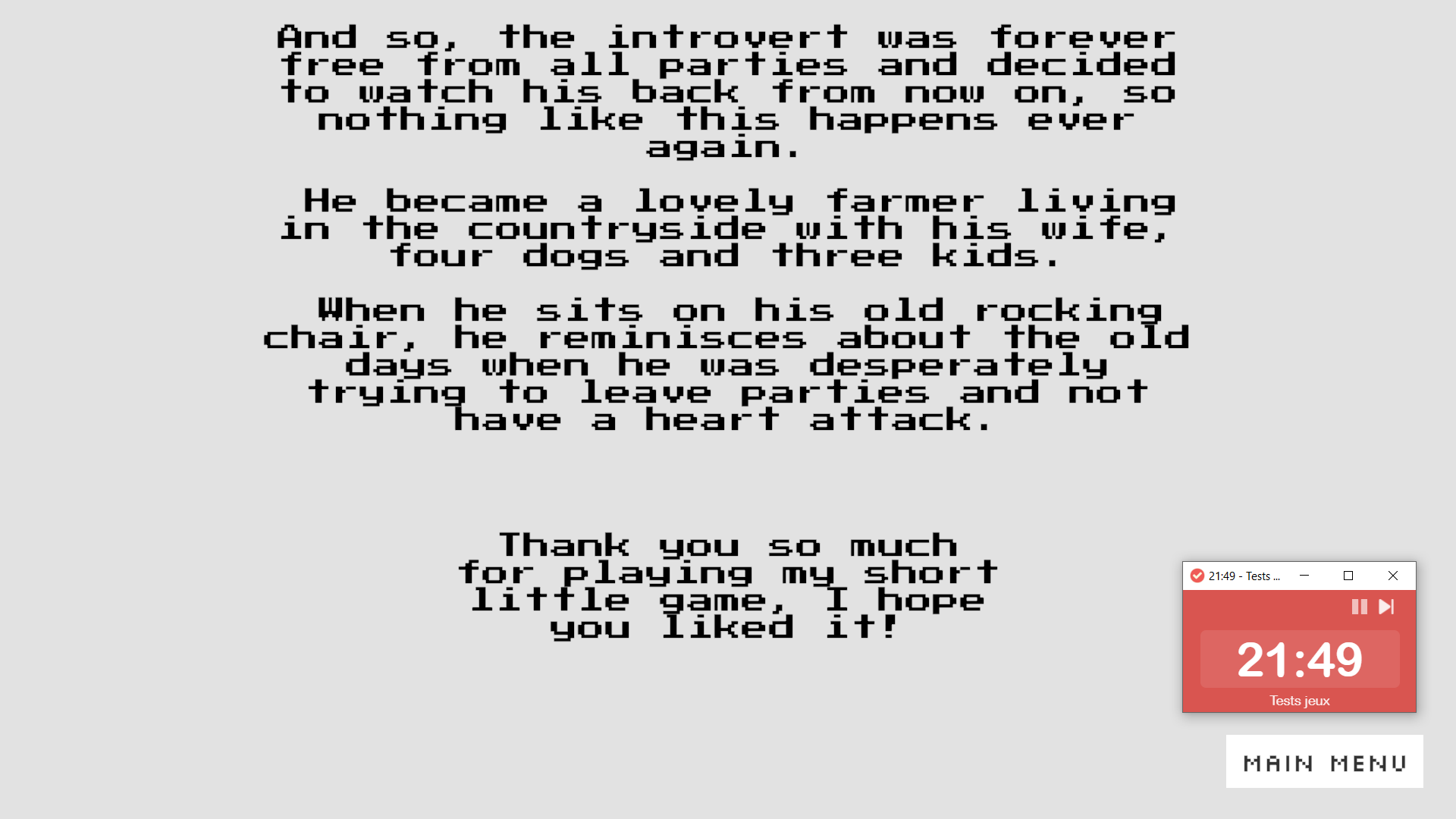I'm going to be honest, I wasn't even aware an AZERTY keyboard exists. I learned about that much much later on in the jam, and I'm going to make sure to make the controls proper in my upcoming games.
PROTIP: it is very easy to achieve: simply program according to the physical position of the keys. :) Most (if not all?) video game APIs provide such a feature.
I heard that a lot of people don't like headbobbing in games, but I thought it simulated the character's panic really well
Agreed, I felt the same way!
If the one you saw was horizontally, it is most likely an oversight by me.
Oops, I may have been a little ambiguous, there! What I meant was that the horizontal dimension was (voluntarily, I think) shrinked, not that the portrait was sideways.
The second level I wanted to be hard, but I think I accidentally made it a bit too hard. I was kinda messing around with the maze and then I looked at it from bird's eye view and I was like: Oh no. But it was too late to change it so I just kept the level impossible. And yes, the second level is massive.
This is hilarious, I was wondering if I was somewhat bad! XD This blunder may have cost my vote to some games from my final rush, although I should have been more reasonable and call it quits sooner…
The doors opening the wrong way are caused by two hallways from different directions being connected.
I still feel this is some kind of clue as to how the labyrinth was conceived, so it helped my intuition. ;) Plus, in reality, many doors do open only from one side, so this is realistic!
The third level is actually not even that big. In fact, i think it's smaller than the first one. I just designed it to have every room look the same, which made it very disorientating, and even I sometimes couldn't find the exit when I was testing haha.
This is great, because it means you managed to find another way of having difficulty in a level! :) Variety through level design. I will say again that level design may well be the defining feature that makes your game shine (although all the rest is nice).
However I am quite new to game dev and had no idea how procedural generation works.
Ah, I could just steer you towards graph theory! :) Actually, as a semi-coincidence, see my mention of ‘Depth-First Search’ in my previous comment? The main concept is graph traversal algorithms. For example, you can use such an algorithm to ‘dig’ a labyrinth throughout a graph (and a 2D-grid is a particular graph!). This defines places for rooms and doors/connections automatically (depending on some number/quantity parameter). Once this has been performed, you can assign some room content template (or even more fine-grained random content) for each room. :)
You can look for explanations on how The Binding of Isaac’s style of procedural generation works, for instance; I know some French content for both the code (from 8:53 to 9:38) and concept, but it should be easy to find, I guess. :) This is actually no rocket science! (… But it is graph theory. XD) (I realize the probability that you speak French must be low seeing you did not know about AZERTY. XD But who knows!)
I don't know if the game is really original,
I wondered too, not knowing every game ever made (far from it, actually!), but I really think the just-run-through-the-doors concept is something I had not seen. I think originality might be the only point up to debate; to be transparent, this is the only criterion where I gave the game a 4 instead of a 5. ;)
Conclusion: I am glad you are glad. ;))
Question I had forgotten to ask: when you win level 3, does something happen?


